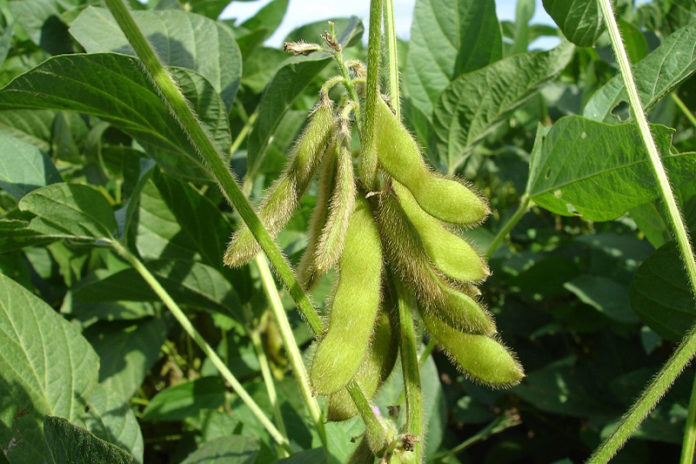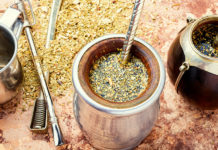Soybeans have a lot going for them. They’re versatile and relatively easy to grow. The U.S. alone grows nearly 100 million acres of them a year, mostly for export. They’re a high protein and lower carbohydrate food compared with other legumes. You can eat them straight or turn them into tofu. Food manufacturers use them to make meat substitutes as well. They’re one of the few plants that contain all of the amino acids you need.
However, many people have questions about their health benefits versus potential harm. Concerns usually focus on the compounds known as phytoestrogens.
A 2010 paper published in Frontiers in Neuroendicrinology concluded that “the question of whether or not phytoestrogens are beneficial or harmful to human health remains unresolved.” Not very satisfying, right? It turns out, phytoestrogens might not be the main concern anyway. Read on as we break down the good and the bad about soybeans.
The 411 on Soybeans
Although most Asian countries have eaten a large amount of soy for generations, high soy consumption is a more recent development in the western world. Vegetarians and vegans tend to consume more than meat-eaters. In 1999, the FDA approved a claim that consuming 25 grams of soy protein could reduce the risk of heart disease.
The beans grow in pods, similar to pea pods. You may have seen the whole pods served in restaurants as edamame. The beans inside go from green to brown as they ripen on the plant. To make tofu, one grinds, soaks and heats them, mixing in salt and other minerals. Different varieties are used for different end products.
You might hear a lot of confusing terms in discussions about soy: estrogen, phytoestrogens, polyphenols, or isoflavones. To break it down, isoflavones are a type of polyphenols, which are, in turn, a type of plant compound called phytoestrogens.
Isoflavones -> Polyphenols -> Phytoestrogens
For simplicity, we’ll use the term isoflavones here. Isoflavones are highly contained in soybeans and share characteristics with the hormone estrogen.
Isoflavones and the Endocrine System
Because of their resemblance to a hormone, isoflavones are sometimes considered endocrine disruptors. That would mean they interfere with thyroid function and sexual hormones. A 2013 study explained that they “mimic the action of estrogens on target organs, thereby exerting many health benefits when used in some hormone-dependent diseases.” There are times when more estrogen is good; others when it is bad.
The authors of that study, which appeared in the European Journal of Drug Metabolism and Pharmacokinetics, gave several examples. They said it could help prevent breast and prostate cancer, cardiovascular disease and osteoporosis. How much the body absorbs depends on the makeup of the individual’s gut flora. Some people are more able to absorb and use the compounds than others.
The University of Oregon adds that breast cancer prevention benefit occurs when isoflavones are consumed early in life. They also dismiss prostate cancer prevention benefits as lacking evidence. However, they do cite the reduced risk of stroke–at least in women–as another benefit. For the latter conclusion, they studied Asian populations. They add, “Low consumption of soy foods in Western cohorts makes it more difficult to analyze possible longitudinal associations between isoflavone intake and CVD incidence or mortality in these populations.” In other words, if western countries continue to eat high amounts of soy, we can eventually learn about their long-term effects.
Another area related to estrogen is perimenopause and menopause. Estrogen is known to help relieve symptoms of these. A somewhat recent development is bio-identical hormone replacement therapy for this purpose. Drugmakers derive compounds from soy as well as yams and create estrogen mimics. These therapies cause few side effects and work better than traditional hormone replacement therapy.
Men sometimes worry about consuming a compound similar to estrogen. However, the International Society for Sexual Medicine says conclusively, “Soy intake does not raise or lower a man’s testosterone levels.”
Concerns About Soy
Potential issues with soy do not stop with isoflavones, unfortunately. There are other health factors to consider.
Unless you choose products made only with organic soy, your soy-based foods probably contain traces of glyphosate. The chemical in RoundUp, is in the vast majority of U.S. food crops. This potential contamination is not unique to soybeans, of course. Consider all industrially produced fruits and vegetables a potential source of this carcinogen.
Another thing to note is, soybean oil contains a high ratio of omega-6 to omega-3 fatty acids. So, if like many people, you aim to increase your omega-3 intake, steer clear of this oil.
Soy can be hard for some people to digest. It also makes it hard to absorb protein–one of the reasons you might eat it in the first place. You could experience gastrointestinal distress. To avoid these complications, choose fermented soy options like tempeh, miso, or natto. These provide a great source of probiotics.
Finally, remember it is possible to consume too much protein, contrary to popular wisdom. Make sure to consume a healthful balance of macronutrients, vitamins, and minerals. Talk with a holistic health practitioner or nutritionist to make sure you meet your individual needs. And, make informed choices about whether to eat soy or any other food!








